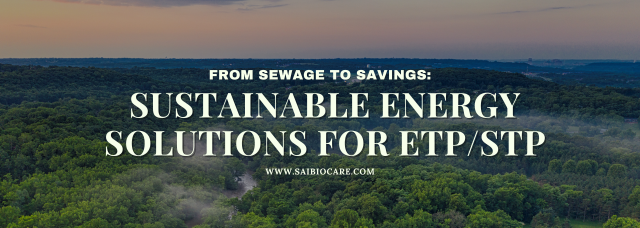Learn How To Lower Energy Consumption At ETP/STP Plants

Energy efficiency in Effluent Treatment Plant (ETP) and Sewage Treatment Plant (STP) is crucial for reducing operational costs and minimizing environmental impact. As these facilities are essential for treating industrial and municipal wastewater, optimizing energy usage not only enhances sustainability but also leads to significant financial savings. This blog explores various strategies to enhance energy efficiency in ETP/STP plants.
1. Optimize Aeration Systems
Aeration is a critical process in wastewater treatment, but it is also energy-intensive. To optimize aeration:
- Use variable-speed aeration systems: These systems adjust aeration rates based on oxygen demand, reducing energy consumption.
- Implement fine-bubble aeration: Fine-bubble diffusers improve oxygen transfer efficiency, requiring less energy.
- Optimize aeration basin design: Ensure proper mixing and oxygen distribution to avoid over-aeration.
2. Enhance Sludge Treatment
Sludge treatment processes consume a significant amount of energy. Consider the following strategies:
- Improve sludge dewatering: Use advanced dewatering technologies like belt filter presses or centrifuge machines to reduce the volume of sludge requiring disposal.
- Optimize sludge digestion: Implement efficient digestion processes, such as anaerobic digestion or aerobic digestion, to maximize biogas production and reduce energy consumption.
- Explore sludge reduction technologies: Investigate technologies like chemical conditioning or biological pre-treatment to reduce sludge production.
3. Implement Energy-Efficient Equipment
Invest in energy-efficient equipment and machinery:
- High-efficiency motors: Replace older motors with high-efficiency models to reduce energy consumption.
- Energy-efficient pumps: Select pumps with high efficiency and variable speed controls to match flow requirements.
- LED lighting: Install LED lighting fixtures to reduce energy consumption and maintenance costs.
4. Optimize Process Control
Utilize advanced process control systems to:
- Monitor and optimize energy consumption: Track energy usage in real-time and identify areas for improvement.
- Implement energy-saving strategies: Use control algorithms to optimize process parameters and reduce energy consumption at ETP/STP plants.
- Detect and address equipment failures: Early detection and resolution of equipment failures can prevent energy losses.
5. Explore Renewable Energy Sources
Consider integrating renewable energy sources into ETP/STP operations:
- Solar power: Install solar panels to generate electricity for onsite use or sell excess power to the grid.
- Biogas: Utilize biogas produced from sludge digestion to generate electricity or heat.
- Wind power: In suitable locations, explore the potential for wind turbines to generate renewable energy.
6. Employee Training and Awareness
Ensuring that plant operators and staff are well-trained and aware of energy efficiency practices is crucial. Regular training sessions can help employees identify and implement energy-saving opportunities in their daily tasks. Encouraging a culture of energy efficiency within the plant can lead to the adoption of small but impactful practices, such as promptly reporting leaks or optimizing equipment usage.
Conclusion
By implementing these strategies, ETP/STP plants can significantly reduce energy consumption and costs. Energy efficiency not only improves financial sustainability but also contributes to environmental protection. It is essential to conduct a thorough energy audit to identify specific areas for improvement and tailor solutions to the unique needs of each plant.
Ready to optimize your ETP/STP plant for better efficiency? Learn how we can help you achieve sustainable and cost-effective wastewater management solutions. Click Here.
